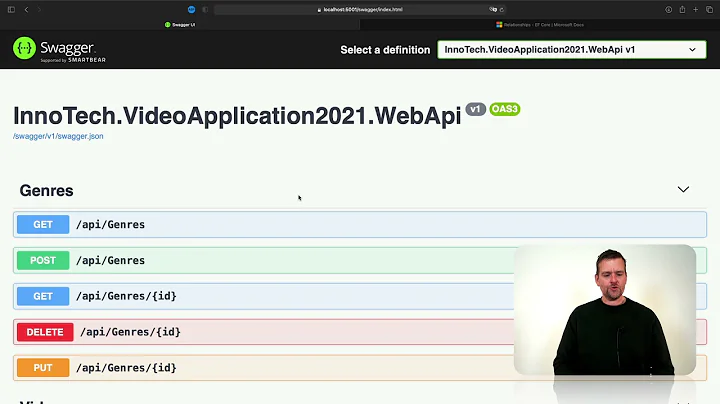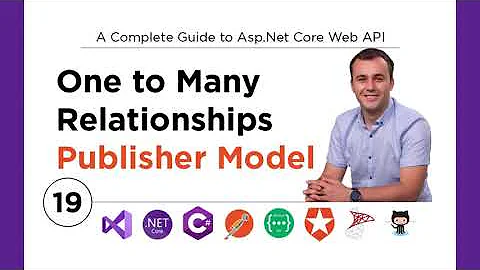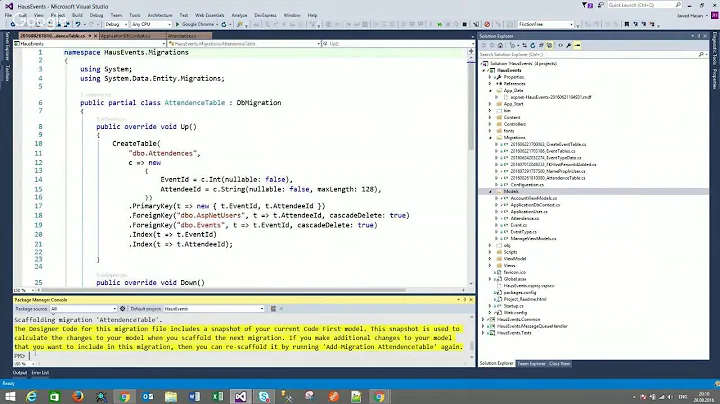Entity Framework Core Code-First: Cascade delete on a many-to-many relationship
First I see you have set City and Address relationship with DeleteBehavior.Restrict and you say:
'//I don't want to delete the City when I delete an Address'.
But you don't need Restrict here, because even with DeleteBehavior.Cascade City will not be deleted.
You are looking it from the wrong side.
What Cascade here does is when a City is deleted all addresses belonging to it are also deleted.
And that behavour is logical.
Secondly your many-to-many relationship is fine.
When deleting Person its links from PersonAddress Table will automatically be deleted because of Cascade.
And if you want also to delete Addresses that were connected only to that Person you will have to do it manually.
You actually have to delete those Addresses before deleting Person is order to know what to delete.
So logic should be following:
1. Query through all record of PersonAddress where PersonId = person.Id;
2. Of those take only ones that have single occurance of AddressId in PersonAddress table, and delete them from Person table.
3. Now delete the Person.
You could do this in code directly, or if you want database to do it for you, trigger could be created for step 2 with function: When row from PersonAddress is about to be deleted check if there are no more rows with same AddressId in that PersonAddress table in which case delete it from Address table.
More info here:
How to cascade delete over many to many table
How do I delete from multiple tables using INNER JOIN in SQL server
Related videos on Youtube
m.phobos
I'm passionate about tech and softare development. I'm involved in several windows and web development projects. I work mainly with c# and vb.net on WinForms, WebForms, WPF, WCF, ASP.NET and MVC technologies.
Updated on July 09, 2022Comments
-
 m.phobos almost 2 years
m.phobos almost 2 yearsI'm working on an ASP.NET MVC 6 project with Entity-Framework Core (version
"EntityFramework.Core": "7.0.0-rc1-final") backed by a SQL Server 2012 express DB.I need to model a many-to-many relationship between a
Personentity and anAddressentity. As per this guide I modeled it with aPersonAddressjoin-table entity, because this way I can store some extra info.My goal is to set-up my system this way:
- If a
Personinstance is deleted, all the relatedPersonAddressinstances must be deleted. All theAddressinstances they reference to must be deleted too, only if they are not related to otherPersonAddressinstances. - If a
PersonAddressinstance is deleted, theAddressinstance it relates to must be deleted only if it is not related to otherPersonAddressinstances. AllPersoninstances must live. - If an
Addressinstance is deleted, all the relatedPersonAddressinstances must be deleted. AllPersoninstances must live.
I think most of the work must be done in the many-to-many relationship between
PersonandAddress, but I expect to write some logic too. I will leave this part out of this question. What I'm interested in is how to configure my many-to-many relationship.Here is the current situation.
This is the
Personentity. Please note that this entity has got one-to-many relationships with other secondary entities.public class Person { public int Id {get; set; } //PK public virtual ICollection<Telephone> Telephones { get; set; } //navigation property public virtual ICollection<PersonAddress> Addresses { get; set; } //navigation property for the many-to-many relationship }This is the
Addressentity.public class Address { public int Id { get; set; } //PK public int CityId { get; set; } //FK public City City { get; set; } //navigation property public virtual ICollection<PersonAddress> People { get; set; } //navigation property }This is the
PersonAddressentity.public class PersonAddress { //PK: PersonId + AddressId public int PersonId { get; set; } //FK public Person Person {get; set; } //navigation property public int AddressId { get; set; } //FK public Address Address {get; set; } //navigation property //other info removed for simplicity }This is the
DatabaseContextentity, where all the relationships are described.public class DataBaseContext : DbContext { public DbSet<Person> People { get; set; } public DbSet<Address> Addresses { get; set; } protected override void OnModelCreating(ModelBuilder builder) { //All the telephones must be deleteded alongside a Person. //Deleting a telephone must not delete the person it refers to. builder.Entity<Person>() .HasMany(p => p.Telephones) .WithOne(p => p.Person); //I don't want to delete the City when I delete an Address builder.Entity<Address>() .HasOne(p => p.City) .WithMany(p => p.Addresses) .IsRequired().OnDelete(Microsoft.Data.Entity.Metadata.DeleteBehavior.Restrict); //PK for the join entity builder.Entity<PersonAddress>() .HasKey(x => new { x.AddressId, x.PersonId }); builder.Entity<PersonAddress>() .HasOne(p => p.Person) .WithMany(p => p.Addresses) .IsRequired(); builder.Entity<PersonAddress>() .HasOne(p => p.Address) .WithMany(p => p.People) .IsRequired(); } }Both
TelephoneandCityentities have been removed for the sake of simplicity.This is the code for removing a
Person.Person person = await _context.People.SingleAsync(m => m.Id == id); try { _context.People.Remove(person); await _context.SaveChangesAsync(); } catch (Exception ex) { }As for my readings avoiding
.Include()will let the DB take care of the eventualCASCADEdeletes. I'm sorry but I don't remember the SO question where this concept was clarified.If I run this code I can seed the DB using this workaround. When I want to test-deleting a
Personentity with the above code, I get this exception:The DELETE statement conflicted with the REFERENCE constraint "FK_PersonAddress_Person_PersonId". The conflict occurred in database "<dbName>", table "<dbo>.PersonAddress", column 'PersonId'. The statement has been terminated.I tested several relationship setups in the
DatabaseContext.OnModelCreatingmethod without any luck.Finally, here's my question. How should I configure my many-to-many relationship in order to correctly delete a
Personand its related entities from my application, according to the goal described before?Thank you all.
- If a







